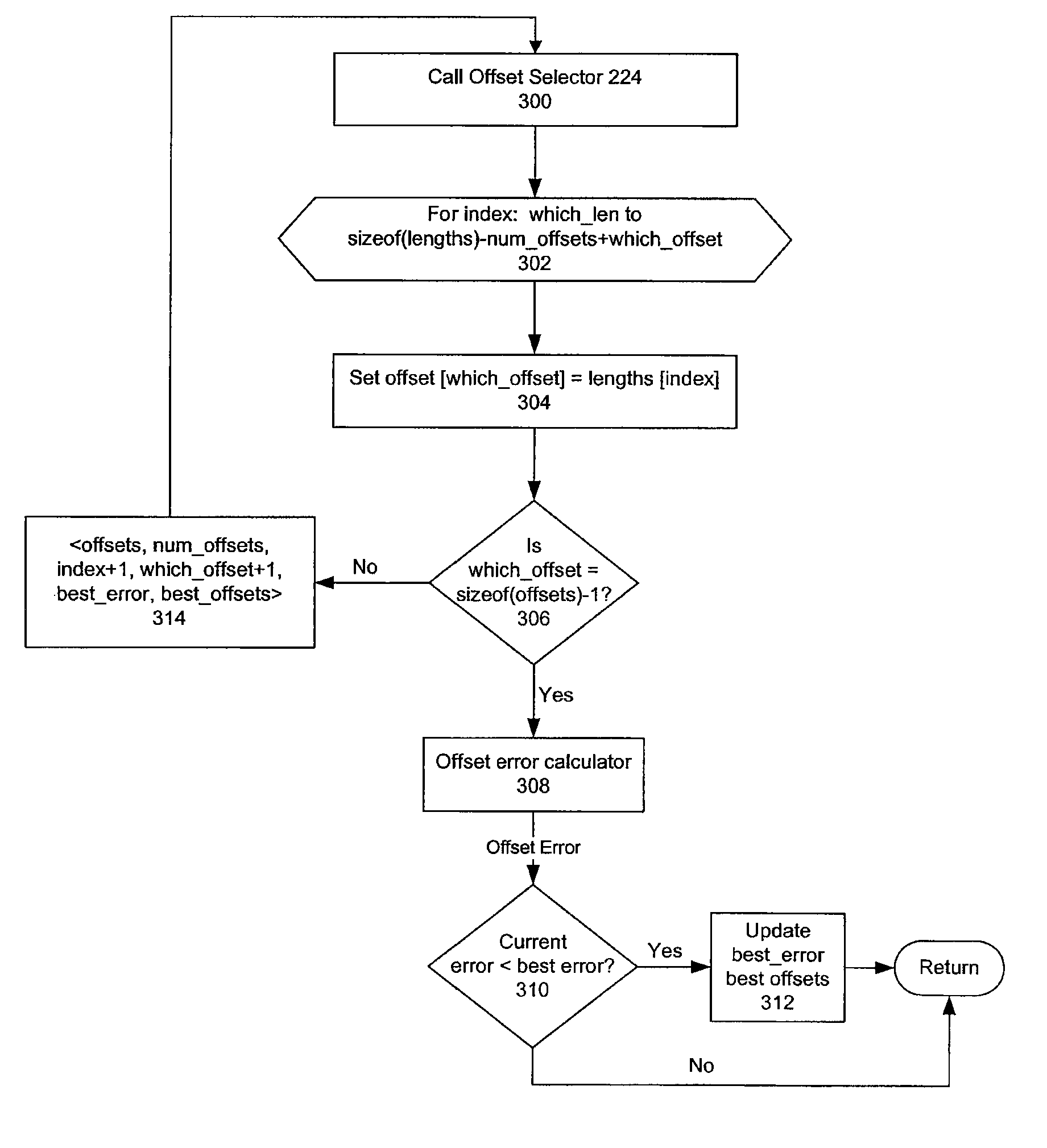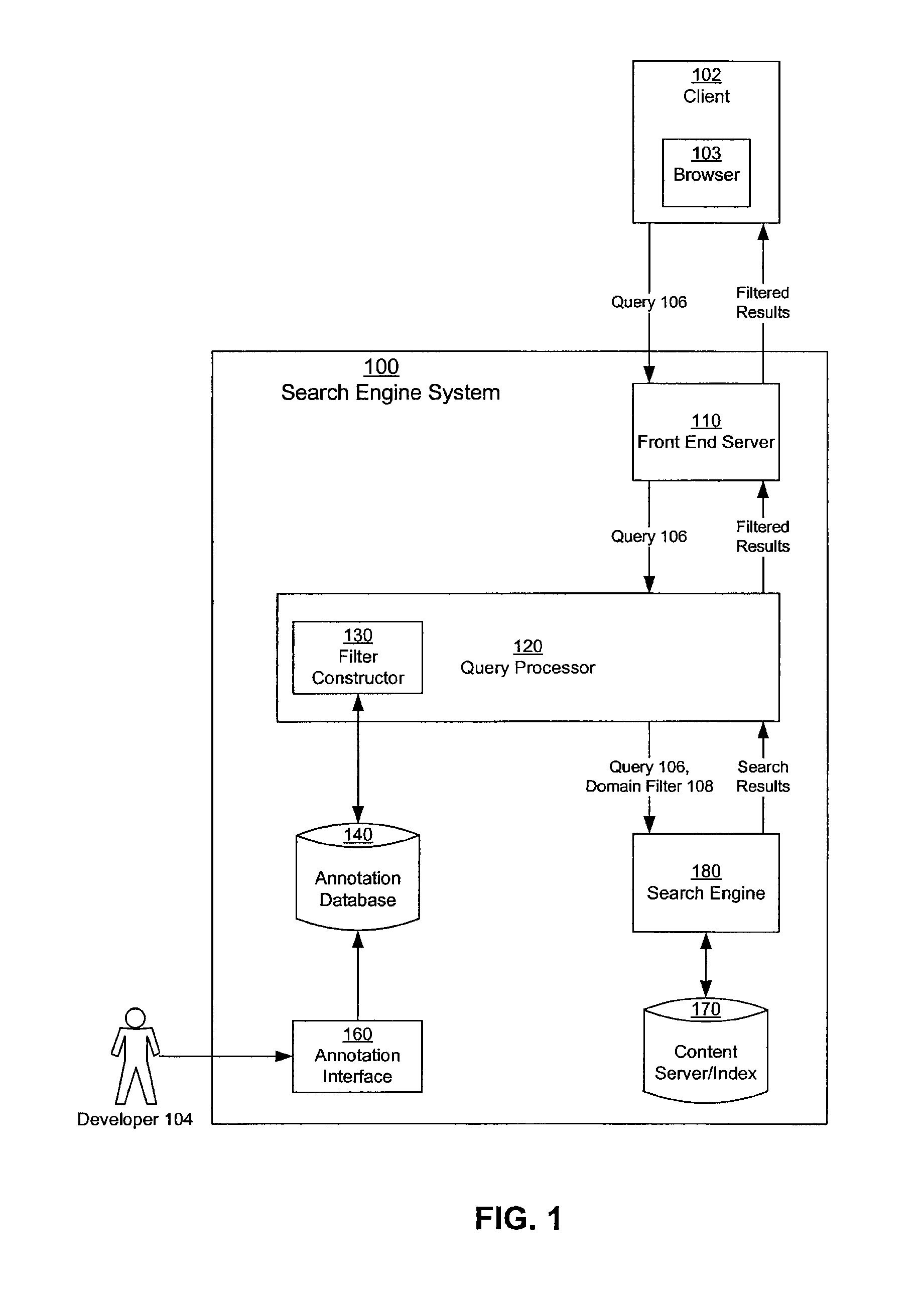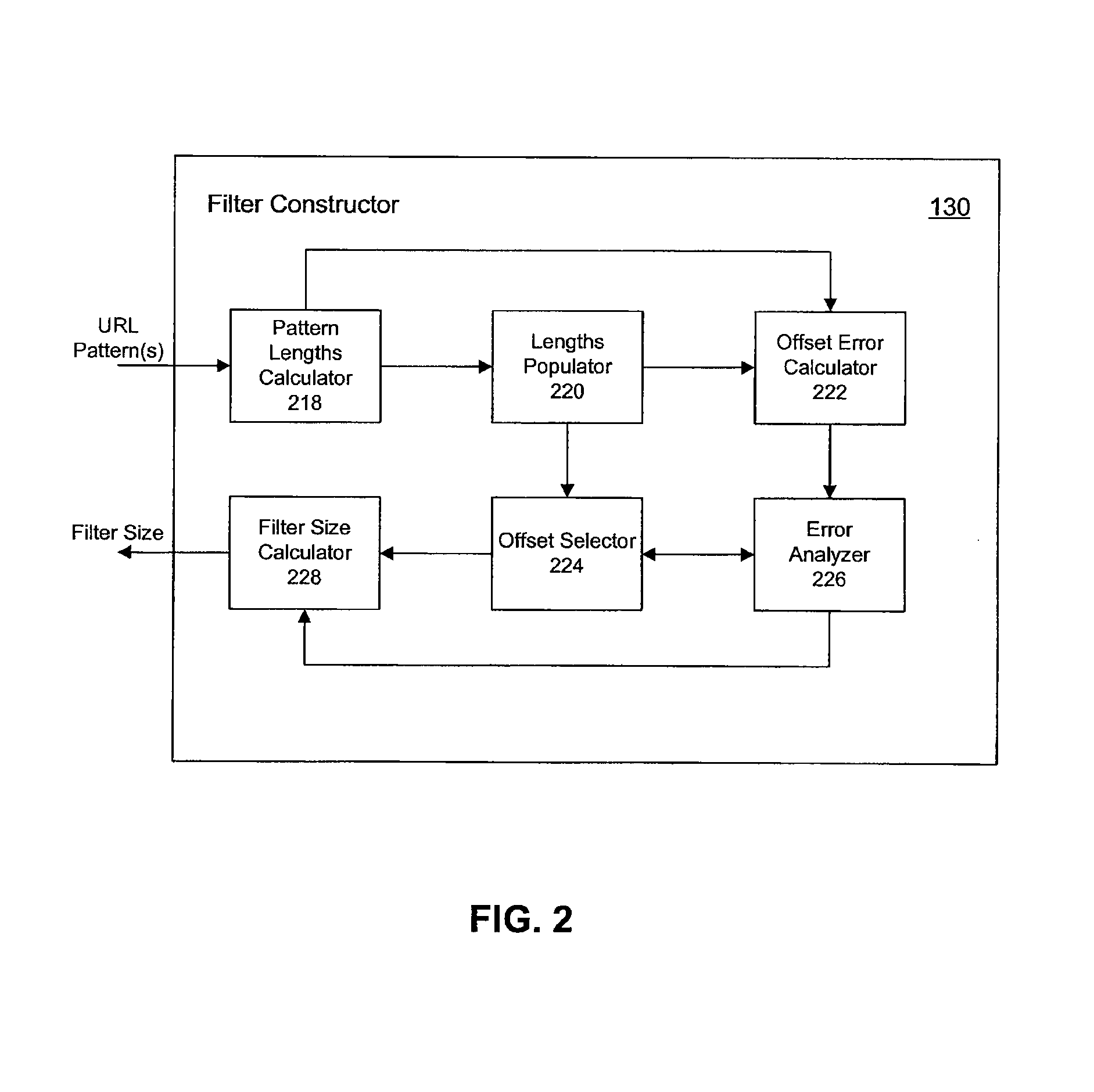Filtering in search engines
a filtering and search engine technology, applied in the field of search engines, can solve the problem that filters may have a small false positive rate, and achieve the effect of improving filtering, minimizing filter errors, and improving search results
- Summary
- Abstract
- Description
- Claims
- Application Information
AI Technical Summary
Benefits of technology
Problems solved by technology
Method used
Image
Examples
Embodiment Construction
)
[0017]In an embodiment, the size of a filter in a search engine is dynamically adjusted in order to reduce filter error. The filter, for example, may be a domain filter that contains domain(s) of preferred search results. A search engine processes a query with the domain filter to create a set of search results that are relevant to the query terms and for which a selected portion of the search results satisfy the domain filter. To satisfy the domain filter the selected portion of the documents come from domains identified in the domain filter. The search results may then be provided to the user, as a set of search results that are relevant to the query terms and which include some portion of results that match the query labels.
[0018]The construction of the domain filter may be done with a Bloom filter approach, using URL prefixes from URL annotations. The domain filter may have a small false positive rate. This false positive rate may result from an inherent false positive rate of ...
PUM
 Login to View More
Login to View More Abstract
Description
Claims
Application Information
 Login to View More
Login to View More - R&D
- Intellectual Property
- Life Sciences
- Materials
- Tech Scout
- Unparalleled Data Quality
- Higher Quality Content
- 60% Fewer Hallucinations
Browse by: Latest US Patents, China's latest patents, Technical Efficacy Thesaurus, Application Domain, Technology Topic, Popular Technical Reports.
© 2025 PatSnap. All rights reserved.Legal|Privacy policy|Modern Slavery Act Transparency Statement|Sitemap|About US| Contact US: help@patsnap.com



